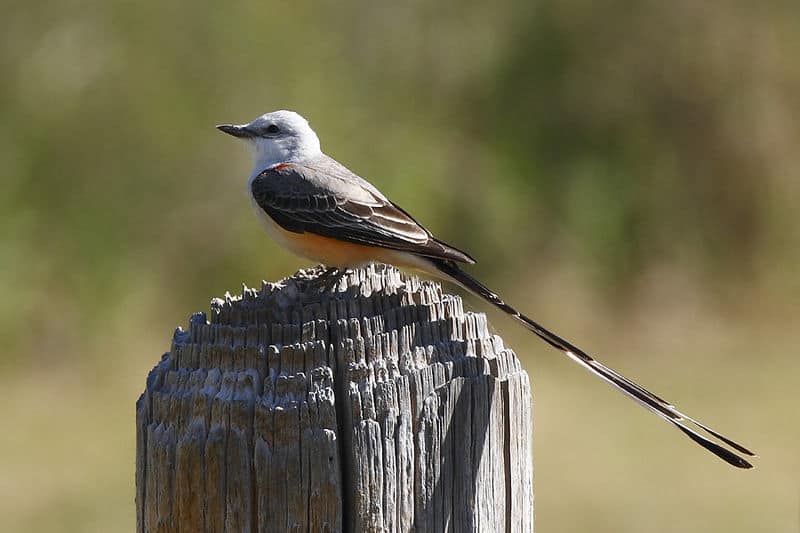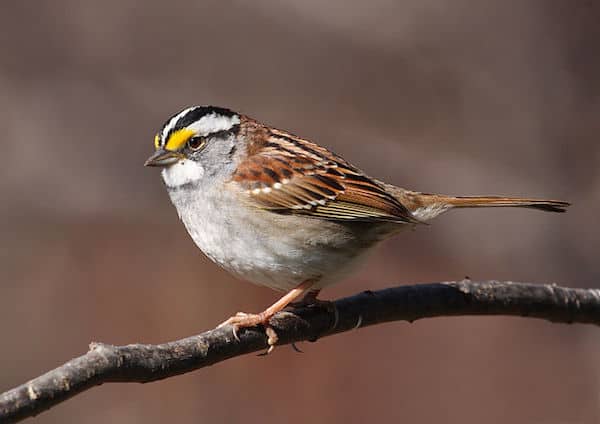Thursday, May 7, 1987, 7:00 a.m. PDT. Joan Lentz, author, fellow birder, and the only person I know crazy enough to trek off with me to the wilds of Oklahoma and Arkansas, sits next to me during the plane ride to Tulsa, writing furiously in her little brown notebook. She makes check marks in her field guide next to species we are likely to see on this, our first trip east of the Rockies. We stare at pictures of empids and try to recreate their calls for instant recognition in the field. Che-bek! she calls loudly, and I follow up with an “explosive wick-up!” The flight attendant eyes us suspiciously and approaches with an airsick bag. I tell her that we are birders. Somehow, that seems to explain everything.
1:30 p.m., Tulsa time. We land at the airport and are met by our hostess and unofficial guide, Jeri McMahon. We have our binoculars at hand as we deplane. We see our first eastern species: eastern starling and eastern rock dove. We are elated. We note the subtle differences between the eastern and western species. Joan writes this in her notebook.
2:00 p.m. We begin our drive to Jeri’s home in Ft. Gibson, near Muskogee. We watch out the window as we drive. Wait! A scissor-tailed flycatcher on the wire! And on that wire! The first ten scissor-tailed flycatchers put us in ecstasy. The next 5,000 don’t. Joan writes “trash birds” in her notebook.

3:00 p.m. We stop to see dickcissels and bobolinks. These dickcissels, unlike the western species, which are “rare but regular” during fall migration back home, have little black bibs. And the bobolinks are mostly black and white. We are confused. Joan writes “confused” in her notebook.
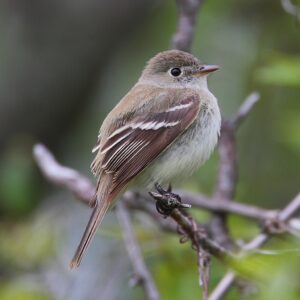
11:00 p.m. We make ourselves at home on Jeri’s generous deck overlooking the bayou. Still on California time, our bodies won’t relax for sleeping at such an hour. A chuck-will’s widow calls from the distance, representing life bird number 14 for the day. We finally retire to the guest room, anticipating a morning of birding starting at dawn, followed by a long drive to western Arkansas for the Audubon spring meeting there. We sit up in bed and write. I record my life birds for the day and study the possible species we might see tomorrow after our drive farther east. Joan writes furiously in her notebook, fueled by a Diet Pepsi balanced on top of the headboard. Finally, she turns out the light. I dream of cerulean warblers.
Friday, May 8, 6:30 a.m. The alarm sounds. Joan struggles up and heads to the kitchen for a cup of coffee to revive her. I get dressed in the jeans I wore yesterday, already thick with burrs. We head into Jeri’s sanctuary for some early morning birding before we pack up and head for Arkansas. I get four more life birds, including the least flycatcher. This is an amazing hard bird to see, and it looks remarkably like a western flycatcher when careening through the foliage and hiding behind clumps of leaves. Che-bek or not, we are grateful for Jeri, who points to the bird and says, “That is a least flycatcher.” I take a sidelong glance at Joan, who is writing “impossible” in her notebook.
5:00 p.m. We arrive at Camp Ozark after a long drive through breathtaking country. Here, we expect to have our wildest birding fantasies fulfilled. My heart leaps as I spy my first unfamiliar bird. It is high in a pine tree and appears to be sitting rather still—a vireo, perhaps? The beak and behavior are not right for a warbler. This bird is unrecognizable. I call Joan over to identify this new species, which will no doubt be a lifer for both of us. As we are puzzling, a local birder approaches us and asks: “Does that bird y’all are lookin’ at have a red crown and then a white stripe and then a black stripe? “Yes, yes!” we cry, breathless with excitement. “That’s a chippin’ sparrah,” he says in a slow southern drawl. No one has told us that chipping sparrows live in Arkansas. We are profoundly embarrassed and slink toward our cabin, scattering more chipping sparrows as we move along.
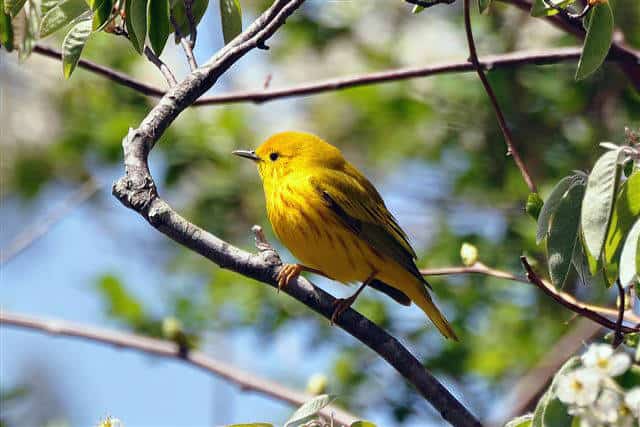
5:05 p.m. Our spirits are revived by the sight of a second unfamiliar bird. This one is definitely a warbler. We hear it sing. I barely see its breast and note the streaks and call it a yellow warbler. Joan groans, waits for a better look, and correctly calls it a pine warbler. It sings again. “We have a singing pine warbler!” we call. The nice man approaches again. “That thing that was singin’ was a chippin’ sparrah.” he says. “They kinda sound alike.” Joan writes, “Pine warbler and chipping sparrow kinda sound alike” We go eat dinner, well aware that our credibility as decent birders has been sabotaged by a bunch of chipping sparrows.
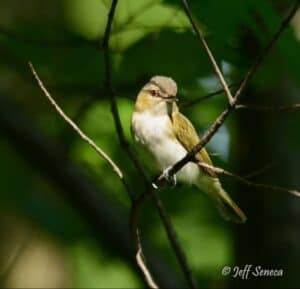
10:00 p.m. We retire to our primitive cabin, exhausted. I have counted 25 life birds already on the trip. Some people have decided to go owling, but I don’t give a hoot about going. We crash.
May 9, 1987. Dawn. It is just past dawn in Arkansas, but 4:00 a.m. California time, and our bodies do not respond to the alarm. Only the promise of early morning birding with Max and Helen Parker rouses us from fitful sleep. No one has the nerve for an early morning shower. Instead, we go through what has become a daily ritual: Pat our bodies down with powdered sulphur contained in an old sock, pull on long pants and (preferably) long sleeves, afterwards spraying the whole outfit with outrageous amounts of insect repellent. We walk down the hill and out of the camp into the morning mist. Repellent not-withstanding, we are beginning to attract flies.
6:30 a.m. Max and Helen are as comfortable here as Joan and I are in Santa Barbara: They know all the bird songs. They call a red-eyed vireo in the top of a tree. We look and we listen. We see the bird but are having trouble with the song, even though we’ve heard these birds before. “They song just seems slow or something,” Joan notes. “Honey,” replies the native Arkansan at her elbow, “this is Arkansas. Ever’thing is slowed down just a bit when you’re in Arkansas!” Joan and I look at each other. She writes, “Birds in Arkansas sing in southern dialect.” We move on.
8:00 a.m. Breakfast. Not bad except for the strange white gravy with no taste. I comment that the cook must be out of something and that this kind of stuff is inexcusable. The natives are sopping it up with everything on their plates. Oh, where is my cheese and avocado omelet?
9:00 a.m. We head out in little caravans for late-morning field trips. Max and Helen know all the shortcuts and we drive along isolated country roads, each with its own squashed armadillo. My kids have begged for a picture of an armadillo. I watch for one in full possession of all its body parts. I am unsuccessful in my search.
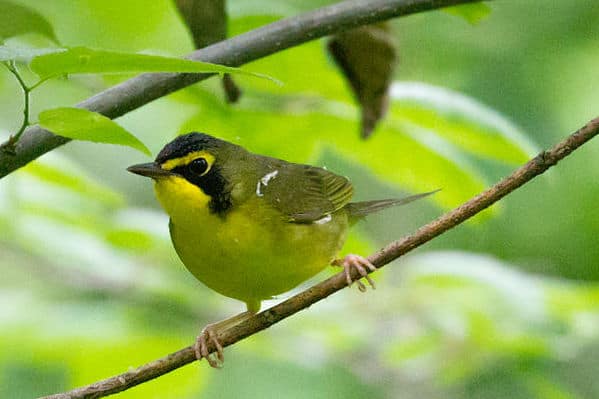
We enter the forest and are immediately impressed. The foliage is so thick, the umbrella so high, and the leaves so large that finding anything with wings seems impossible. I sit down in a roadside patch (later determined to be poison ivy) and pish. Nothing. I pish again, louder and more insistently. Nothing. Jeri gingerly approaches and explains that birders here don’t pish, a fact I find to be incredible. I give up pishing for the moment and go headlong into the forest to catch a glimpse of a Kentucky warbler. Chiggers, ticks, and snakes are no doubt poised to assault my body.
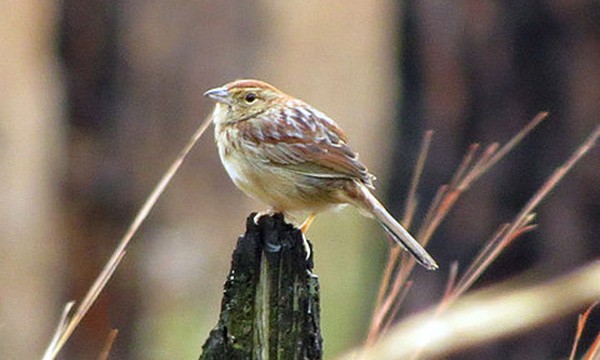
Later we follow Max and Helen to a place where someone has heard the Bachman’s sparrow. We get out of the car, look, and listen. Someone has a tape, and plays it, but to no response. Little feathered creatures are flitting about, but out of good viewing range.
Max heads into the brush with a scope. I am horrified as I think of all the ticks and chiggers that will soon be crawling up his pants legs. I decide I don’t want to see a Bachman’s sparrow that badly, life bird or not. Max hears the bird, think he sees it fly, and Joan goes for it, calling back over her shoulder. “Chiggers and ticks be damned!” I head down the road, sticking to the shoulder and not venturing into the woods. In half an hour, Joan emerges without having seen the sparrow. I wonder how many ticks are finding new homes on her body and what the incubation period is for Rocky Mountain spotted fever.
Noon. Over a lunch of pizza and biscuits with more white gravy, Joan and I discuss the pishing problems, arriving at the most logical conclusion: These people don’t know how to pish correctly. Obviously hampered by their southern drawl, which they had readily admitted “kinda slows things down,” their “pish,” we reasoned, must most certainly come out more like a “pah-ish.” That a “pah-ish” is not a “pish” is evident in their failure to successfully call up any birds! Delighted at our sensible theory, we go forth determined to show these people what a good sharp “pish” can do for a birder.
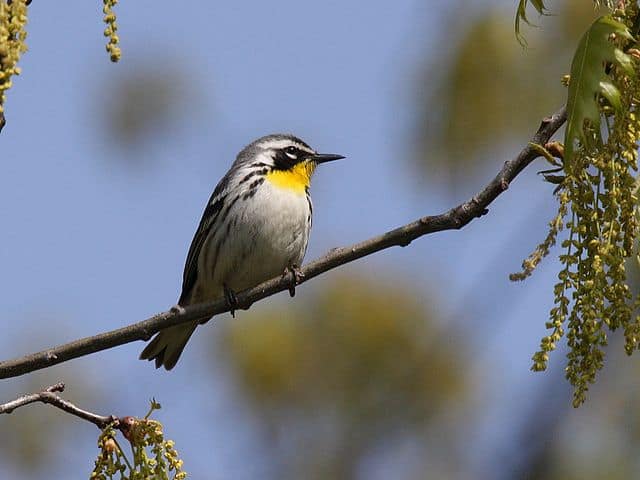
3:00 p.m. Gayle Benton, an avid birder who has also come from California with her friend Helen Matelson, has a possibility for one life bird on this trip: the yellow-throated warbler. We hear one calling constantly but cannot find it. We are frustrated. We all want Gayle to get her bird, which would be a life bird for me also. We hike up and down hills and cross a stream to get to the other side, where the song is coming from. It’s getting hot, and there are a zillion high trees. After awhile I give up the search and go back to the stream, where I strip off my shoes and socks and let the cool water run over my feet and ankles. I find a tick attaching itself to my leg. I want to go home.
8:00 p.m. The evening’s program begins with introductions of out-of-town birders. I am sitting in the front row between Jeri and Joan, hot, tired, dirty, sans makeup and any recognizable hairstyle. Jeri proudly stands and introduces us, proclaiming our various literary talents and calling us “expert birders from California.” I slink down in my seat as a chipping sparrow (or is it a pine warbler?) sings just outside the compound.
Sunday, May 10. Dawn. Mother’s Day. I think on this fact for only a moment before I stub my toe on a rock while groping my way to the bathroom through the morning mist. Many creatures live in this bathroom, and I am hoping they are late sleepers. There are birds singing everywhere. I get dressed, put on my shoes, and do the required spraying. Joan struggles with shoelaces so saturated with insect repellent that they stand up in all directions like stiffened strands of spaghetti.

Noon. After goodbyes to our new Arkansan friends, we head back to Oklahoma through the Ouachita Mountains. We see our first scarlet tanager, hooded warblers, ovenbirds, and an indigo bunting on every tree top. Not familiar with the bunting’s song, we are continually fooled bu this bird. We decide that any song that can’t be identified originated from an indigo bunting. As we drive along the road, snatches of bird song assault our ears from every side. Indigo buntings.
Monday, May 11. We do our last birding in Jeri’s preserve, then retire to contemplate our fortune. I have racked up 32 life birds on the trip, Joan somewhat fewer because of earlier birding trips to Texas. We stuff stiff jeans and repellent-soaked shirts into our suitcases and imagine that no amount of burr-picking can alter the fuzzy green appearance of our shoelaces. We examine our bodies for chiggers and ticks, satisfied that we have escaped the jungles of Oklahoma and Arkansas alive.
Tuesday, May 12, 7:00 p.m. PDT. After a bumpy ride following a layover in Denver, we arrive home. We have had showers, washed our hair, and applied some makeup in order to make us recognizable to our families. We worry about how we will get back into the mundane tasks of living, after our fabulous week away, and wonder how long it will take to become reacclimated to local birds. We disembark into the cool evening air and immediately hear a bird singing in the distance. We turn to each other confidently. “Indigo bunting!” we chorus.
Epilogue. Soon after our return home, we begin extensive therapy sessions with local birders who use the newest mind-altering techniques to remove all traces of indigo bunting songs from our brains. My daughter finds a well-embedded tick behind my left knee, and my further frantic search reveals one more attached to an unmentionable part of my anatomy. In a panic, I scratch them out, and am told subsequently that I have left some dangerous part of the beasts beneath my skin. In one last, desperate act, I will all of my bird books to Joan and prepare to die.

Looking to Subscribe?
Get 6 print issues of the magazine delivered to your door
& free digital access
- One Year Print Subscription: $26
(to US or Canada, includes digital access) - One Year Digital-only Subscription: $15
- Two Year Print Subscription: $48
(to US or Canada, includes digital access)

